The Banker and The Artist – How This Weekend’s Once In A Lifetime Ducks Unlimited Fundraiser Came To Be
Feb 23rd 2020
Towards the northern part of Wisconsin, where lakes rest upon lakes, Lake Julia can be found. It is here where two friends, a banker and a painter, would unknowingly create a project merging their individual legacies that would go on to influence generations.
The Banker
A veteran of the U.S. Navy during World War II, Jack Puelicher followed in the footsteps of his grandfather and father, leading in the banking industry. As a third-generation banker at Marshall & Ilsley Bank (M&I) in Milwaukee, Puelicher continued the growth of the corporation to $7.9 billion in assets, 37 affiliated banks, and 131 banking offices in Wisconsin at the time of his retirement in 1992. This multigenerational impact of innovative banking practices and dedication to education was honored with the establishment of The Puelicher Center for Banking Education at the University of Wisconsin-Madison School of Business in 1995.
But in the middle of this success, Puelicher spent some time at the lake with a friend.
The Artist
Distraction for young Owen Gromme could be found outside of his school windows. It came in the form of waterfowls on Lake Winnebago, and it was one of the reasons he believes he didn’t graduate high school.
Gromme’s deep fascination with wildlife was rooted in him from childhood. Growing up in Fond du Lac, his exposure to wildlife was abundant. From daily studying to independent exploring, to learning the skill of hunting the land, Gromme was immersed in the Wisconsin forests and marshes.
The nurturing of his naturalist skills were ideal for his first professional job as a taxidermist with the Field Museum of Natural History in Chicago. After serving in the Army during World War I, he headed back to his home state and worked at the Milwaukee Public Museum. During his time there, he was curator of birds and mammals, took part in an eight-month museum expedition to Africa, became an influential conservationist, won the Federal Duck Stamp competition in 1945, published his 20+ year collection of works in “Birds of Wisconsin,” and retired as a department head in 1965.
And during his first year of retirement, Gromme spent some time at the lake with a friend.
“When the history of our time is written, Owen Gromme will stand with Audubon, Muir, and Leopold,” ~ Gromme’s longtime friend and publisher, Mark E. Lefebvre of Madison.
The Lake
It was 1965, Gromme had recently retired from the Milwaukee Public Museum and Puelicher was in the middle of building a new bank building. In Gromme’s retirement, he wanted to focus more on his art. In Puelicher’s building, he wanted to design something that showcased Wisconsin’s landscape and beauty.
And so during a weekend away at Puelicher’s respite on Lake Julia, the friends and avid sportsmen, spent some time together.
Being a fan of Gromme’s work, Puelicher wanted to find some way to support and showcase his friend’s retirement goals. So he simply asked, “Owen, how would you like to have a gallery all your own for paintings?”
Puelicher pitched the idea of Gromme creating a collection of pieces to be part of the new bank building with only one restriction – the subject and settings had to be of The Badger State, Gromme’s specialty.
With little surprise, Gromme agreed to the project.
Akin to brokering a deal on the golf course, these friends developed a project at the lake that even they did not see carrying on such a life of its own.
The Project
Gromme started off his retirement and entered his 70’s with an exclusive, multi-piece, multi-year commission project. Averaging a little more than one piece a month for the next 36 months, Gromme created 43 paintings for M&I between 1966 and 1969.
Releasing Gromme to conceive out of his passion for the outdoors and art with little restriction, Puelicher allowed space for his friend to gift the world with some of the most exquisite pieces of wildlife art known. This is how Gromme acquired the moniker, the Dean of U.S. Wildlife Artists.
In a memoir, Gromme acknowledges this uniqueness of this opportunity and said he “tried to do my very best on everyone and tried to make each one better than the other.”
And that he did.
The pieces brought viewers instantly into the realistic scenes and throughout the varied Wisconsin seasons. From the “Red Fox – Pheasant Tracks” (1967) wintery setting to the intricate spring blossoms found in “Hummingbird” (1966), the paintings became verbs on canvas. “Great Blue Heron Mobbed by Red-Winged Blackbirds” (1966) and “Sandhill Cranes with Young” (1968) preserved the majestic beauty and daily life of the indigent creatures.
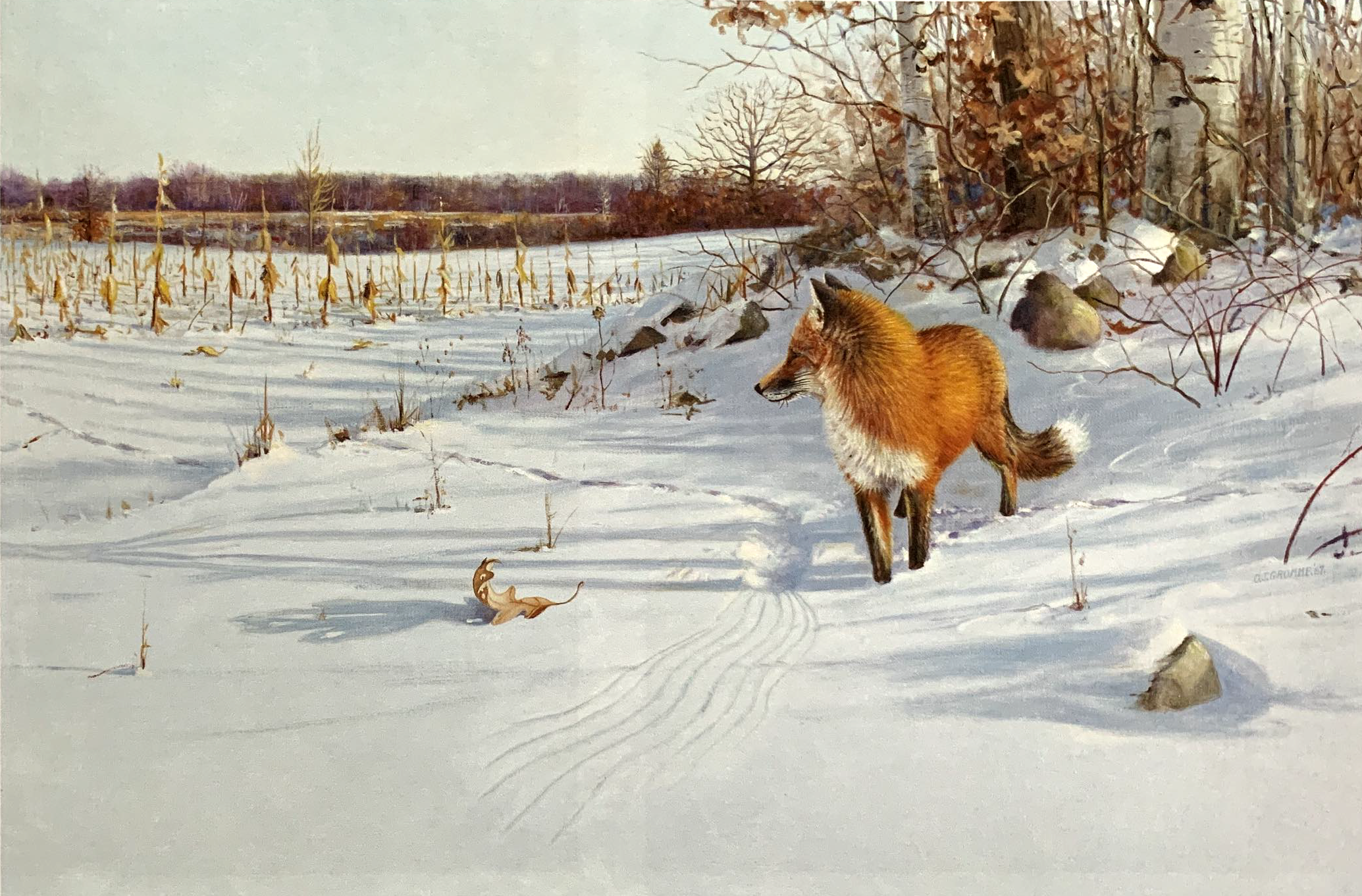
Red Fox – Pheasant Tracks, 1967
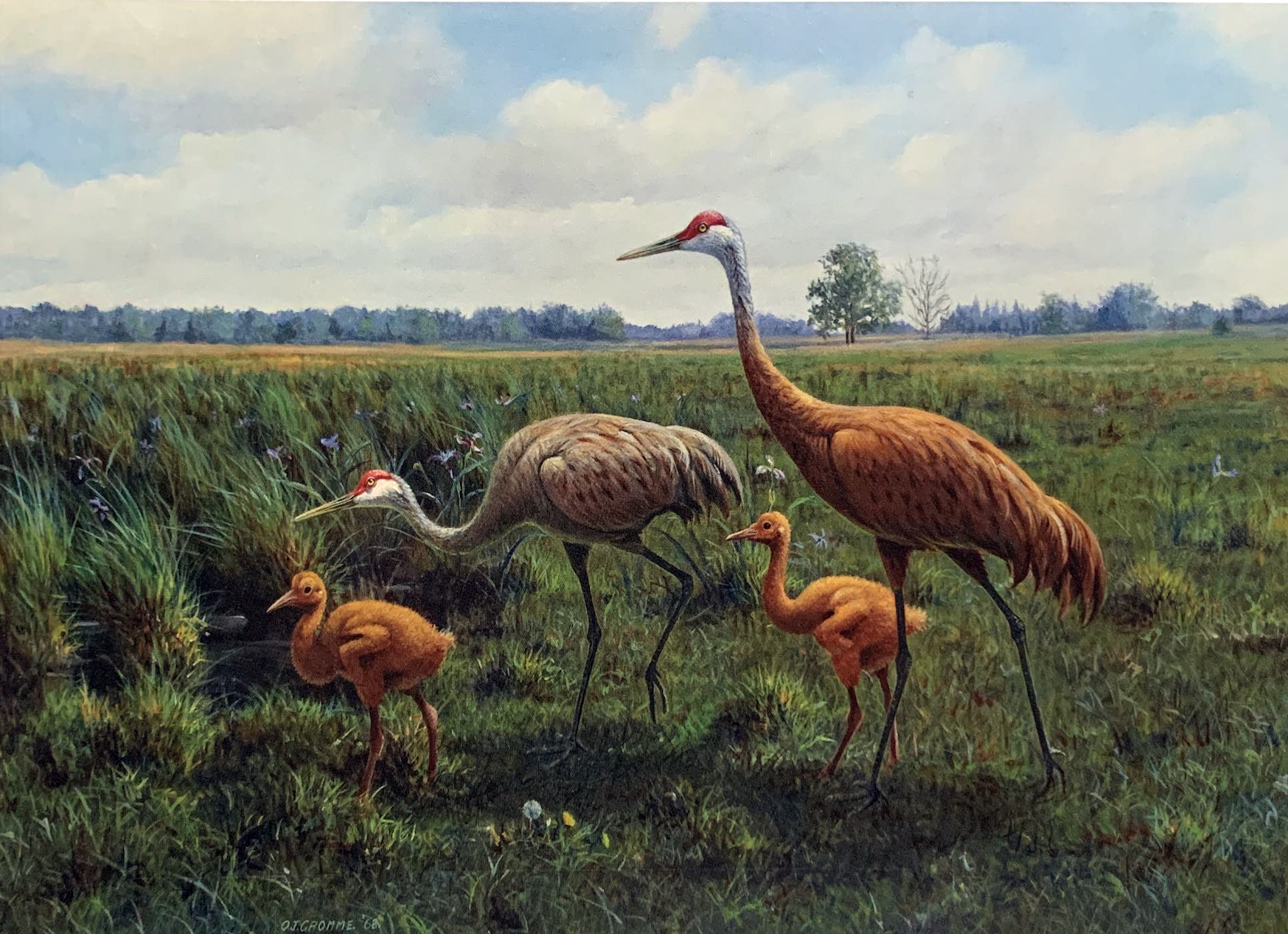
Sandhill Cranes with Young, 1968
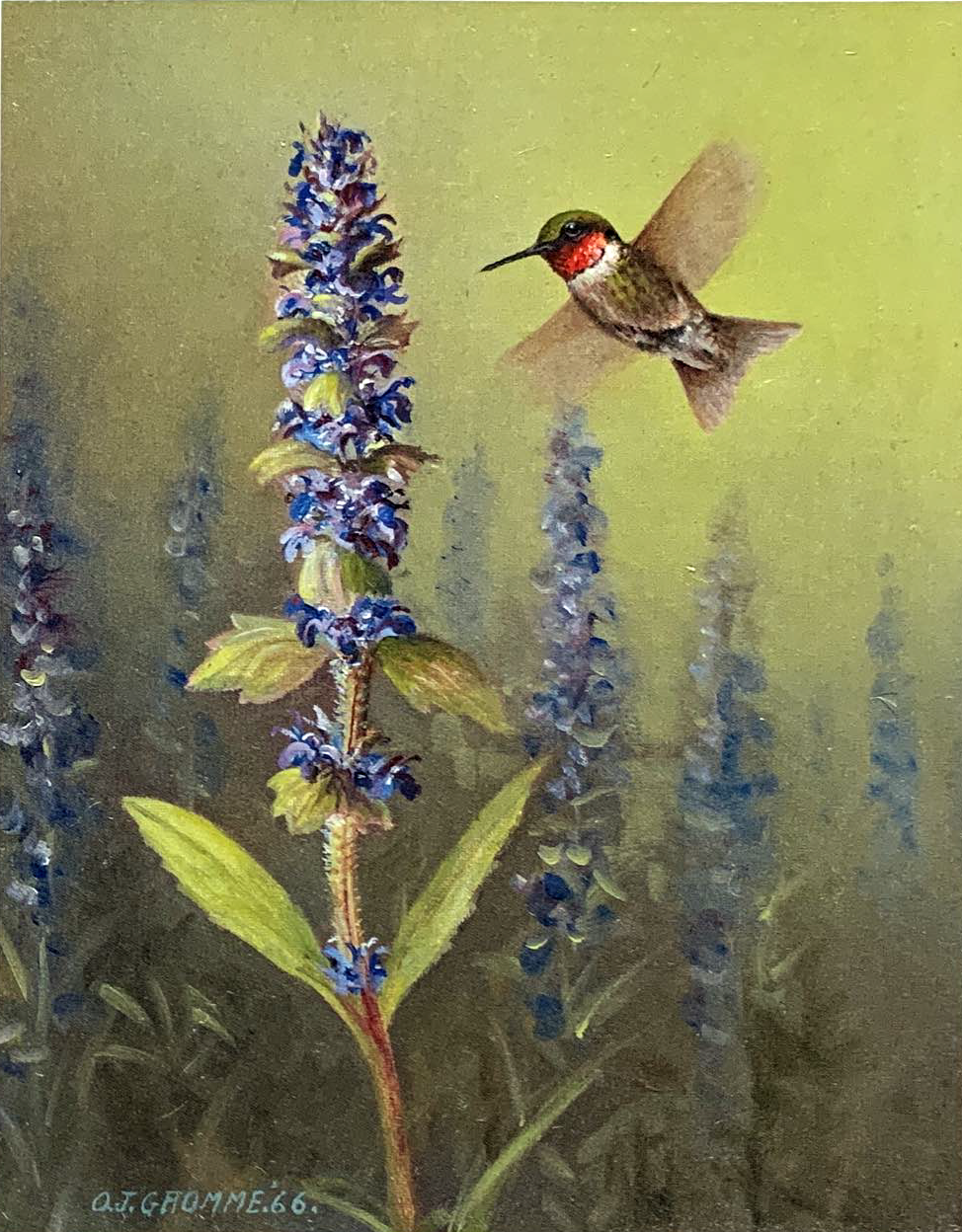
Hummingbird, 1966

Great Blue Heron Mobbed by Red-Winged Blackbirds, 1966
While the pieces featured native species and settings, they also reflected a timeline of Gromme’s life. “Prairie Chicken” (1967) could easily have reflected a childhood memory of hunting in the Fond du Lac area. Or a recall of a successful day in the blind with “Woodcock and Pointer” (1968). “Common Loon with Young” (1967) may very well have been a sight from that memorable weekend at Lake Julia. “Artist’s Studies” (1968) could have been an ideal collection from the artist’s pocket of treasures after an inspirational stroll in the woods.
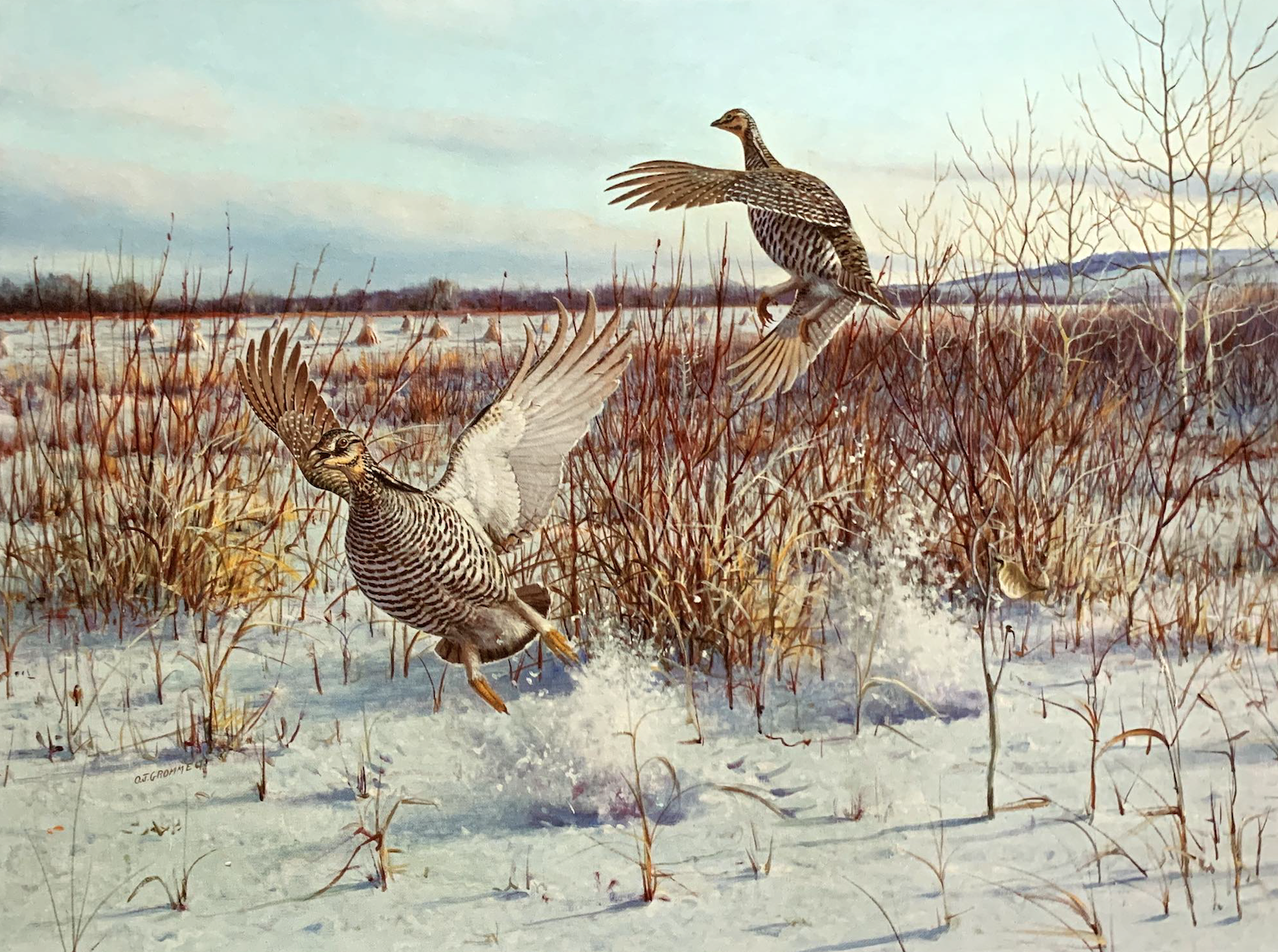
Prairie Chicken, 1967

Woodcock and Pointer, 1968

Common Loon with Young, 1967
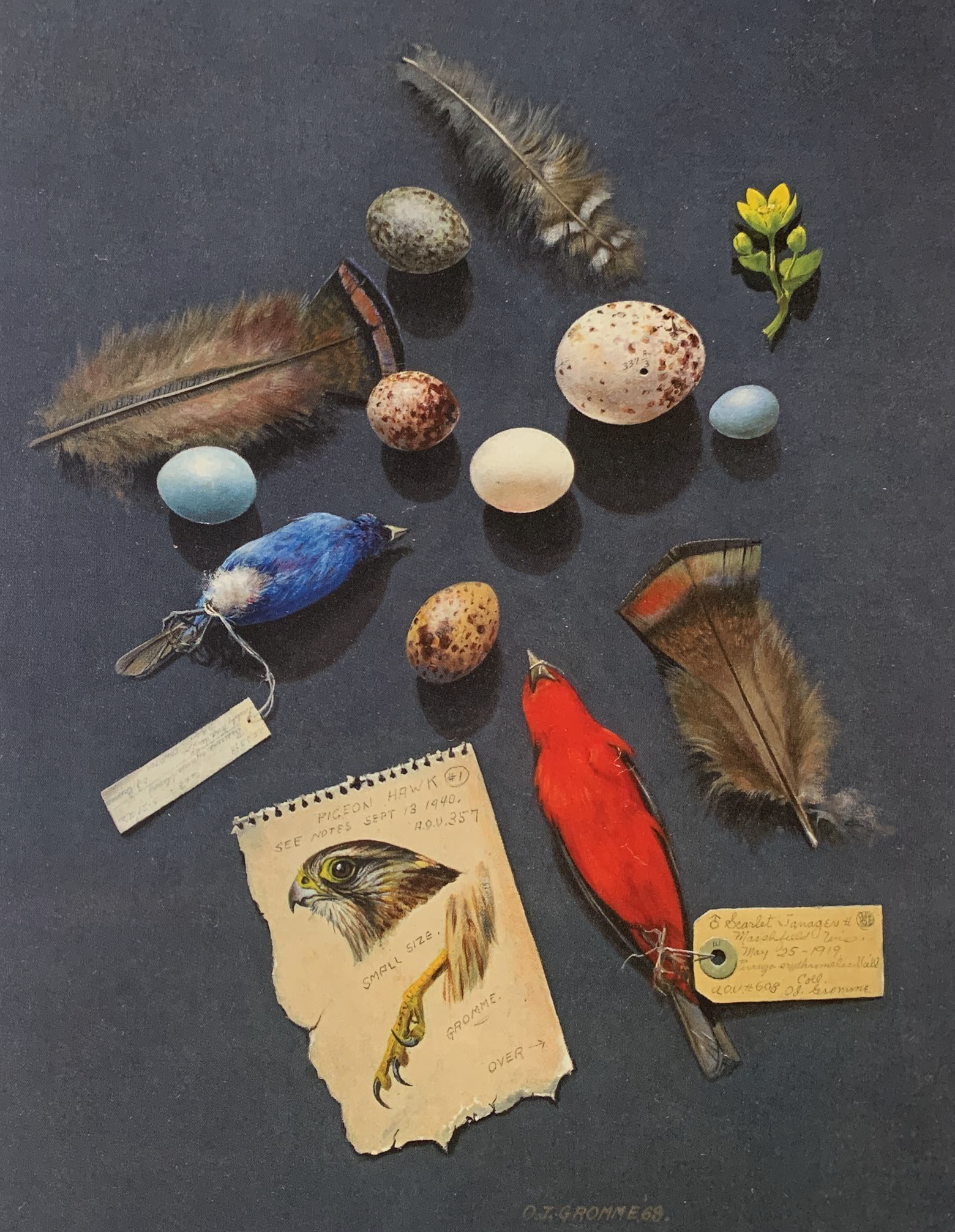
Artist’s Studies, 1968
For decades, those that worked and visited the M&I offices at 770 N. Water Street were simultaneously privy to influential banking systems and legendary art display well beyond the passing of both Puelicher and Gromme.
In 2011, BMO Harris Bank (who purchased M&I that same year) donated the original artwork to the Leigh Yawkey Woodson Art Museum in Wausau – a fitting home that Gromme pivotal in helping launch.
But there were more than the originals.
The Prints
Roughly 20 years after the originals for M&I collection had been generated, exceptional quality signed and numbered prints were published by Stanton & Lee into “The Gromme Master Prints.”
Yet, these were hardly just any prints. Each Master Print was reproduced in a restricted amount of 500 prints, 50 artist proofs and two registration copies. In addition to being numbered, the prints featured an embossing in the margin with a detail from the original. To round out the authentication of the reprint, Gromme reviewed, approved and personally signed each print.
While BMO Harris had donated the originals, eight years later, they still cherished hundreds of these prints.
Until now.
The Cause
Avid hunter, Ducks Unlimited Milwaukee Chapter member, and Director of Wisconsin Commercial Banking for BMO Harris Bank, Neil Riegelman knew of the prints still existed within the bank’s portfolio. He hatched a plan to honor The Banker and The Artist’s friendship and joint love for the natural environment.
In 2019, Riegelman proposed that BMO Harris donate these 900 prints to Ducks Unlimited in Wisconsin. With the sale of these prints in a similar fashion to the 1978 release of Gromme’s “Fall Kaleidoscope,” funds could be raised for the organization to use towards their mission of preserving and protecting waterfowl habitat.
The Opportunity
On February 28 through March 1, in partnership with Ducks Unlimited, Penny Mustard Furnishings in Brookfield will be a temporary gallery for these exclusive, iconic Gromme Master Prints. During this once in a lifetime show, the prints will be available for purchase below appraised value. Proceeds from the sale of the beloved Wisconsin wildlife artist prints will benefit the conservation efforts in the state with a goal of $500,000.
In addition to bringing home a piece of Wisconsin history and helping to support the restoration and enhancement of waterfowl habitat, participants will also be honoring the beautiful, encouraging friendship of The Banker and The Artist.
For more information please visit www.ducksunlimited.art, or call Tom Munich at 262-490-3672, or email him at Tmunich@ducks.org.












